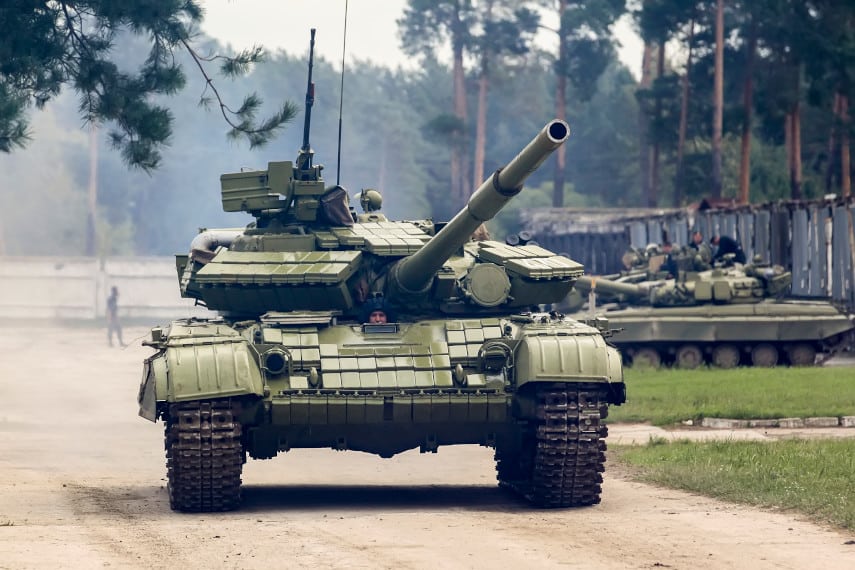Could Trump’s Tariffs Impact the Gold Price?
One of the key initiatives President Trump promised when he was elected was the implementation of tariffs on a wide variety of imports from numerous countries According to Trump, tariffs would, among...
Political

After the horrors of World War II, Europe went to great lengths to ensure that such a conflict never again ravaged the continent. Despite the constant threat from the Soviet Union during the Cold War, European countries continued working together to ensure that they remained united. And once the Cold War ended, everyone thought that the possibility of major power war was over.
With the US as the world’s hegemon and the Soviet Union consigned to the dustbin of history, many people thought that war was largely a thing of the past. Sure, minor conflicts might erupt in less developed countries, but the threat of war was thought to be something that First World nations had overcome.
Now we know better, of course. Decades of war on terror and now more recent conflict in Europe and the Middle East have reminded us that war is a threat that can resurface at any time.
War has a significant effect on the lives of those unfortunate enough to be caught up in conflict zones. But it has significant effects on the lives of people outside conflict zones too.
Whether it’s through disruptions to trade, disruption of travel, or other factors, the lives of everyone is affected by war. And the longer a war lasts and the deeper the conflict reaches, the more people are affected.
We’re seeing today how war and the threat of war is impacting the price of gold. Gold is already a popular safe haven asset and thousands of people have already sought to protect their assets with gold due to fears of looming recession and rising inflation.
But the threat of war can result in even greater demand for gold, as people seek certainty during uncertain times. Here are three ways that war can affect the price of gold
When people start to fear for their financial well-being, they often flee to what they know or to what is familiar. In many cases this means heading for the safety of gold. Many people may not realize the many advantages of gold, but they have an innate sense that owning gold can help them.
Gold can help to diversify your portfolio, assisting you in protecting your wealth against the damage that can be done when financial markets plummet. It can act as a hedge against inflation, as it maintains its value over the long term. And it can gain value during periods when other assets are losing value.
When people start to fear that their assets will lose value, gold is very often the first asset they will seek out. And the more fear there is of war breaking out or of war continuing, the more the gold price could rise as more and more people seek to buy it.
The depth and severity of war are also factors that affect the price of gold. Civil wars in Africa, terrorist incidents in the Middle East, or border clashes in Asia don’t really impact the gold price.
In some ways this is because they happen so regularly that they’ve become ho hum. But they also don’t normally threaten to draw major powers into conflict.
The prospects for those types of wars and clashes spilling over and affecting the world economy are generally pretty slim. But when war breaks out between major powers, even proxy wars, and when the conflict could potentially risk nuclear war, the consequences of a deeper conflict could be severe.
The fighting in Ukraine that began in 2022 reminded most people that nuclear war is still a threat. And the longer the war goes on, the more damaging it could be and the greater the likelihood that a minor miscalculation could result in major consequences.
So the more severe a war is and the greater number of major powers involved, the greater the effect should be on gold. And the longer the war lasts, the more people may decide to buy gold to protect themselves.
Trade between nations is always one of the first casualties of war. And if a country at war is a major producer of necessary goods or raw materials, the effects of war could impact the whole world.
When the conflict in Ukraine broke out, it disrupted trade as many Ukrainian exports couldn’t be produced anymore, while other goods like grain ended up flooding European countries and earning the ire of European farmers. Meanwhile Russian products ended up becoming increasingly sanctioned.
The Houthi attacks on commercial shipping in the Red Sea have perhaps been a classic example of how war disrupts trade, as an increasing amount of commercial shipping has been routed around the Cape of Good Hope rather than through the Suez Canal.
These types of trade disruptions can result in price increases for both commodities and finished goods. Hardly an item we buy today hasn’t been affected in some way by these trade disruptions, though we may not realize it.
Over time we’ll see just how damaging the impact of these disruptions can get, particularly if these conflicts intensify. But the longer they drag on, the more damage will be done.
The war in Ukraine has probably been the most important war impacting the gold price today. Gold prices increased significantly as soon as Russia attacked Ukraine, and they’re still high today.
While we’ve become used to the war by this point, new flare-ups could push the gold price higher. That would especially be true if Ukraine takes a significant bit of Russian territory, or if Western weapons deliveries spur a stronger Russian military response.
Like it or not, we’re in the middle of a great power war here, even if US and NATO boots aren’t actually on the ground in Ukraine. It’s only a proxy war for now for the West, but that doesn’t mean that it couldn’t flare up into an all-out Russia vs. NATO conflict.
It’s hard to get accurate information about what’s going on, but Western countries have already sunk billions of dollars into Ukraine and there’s no way to tell what the return has been. If the conflict ends up becoming a yearslong quagmire, Western taxpayers could continue getting soaked to pay for assistance to Ukraine.
The other conflict that could impact gold prices is the ongoing conflict in the Middle East. With Israel still very much involved in fighting in Gaza, Iran and Lebanon getting involved, and the Houthis attacking commercial shipping alleged to be involved in trading with Israel, the entire Middle East is a powder keg waiting to blow.
While thus far all sides have been rather cautious and hesitant to engage in escalation, that can only last for so long. It could only be a matter of time before one side loses its cool, does something rash, and the entire Middle East is plunged into war.
Oil markets have been jittery recently with the saber rattling that has been going on, and it seems like one miscalculation is all that would be needed for war to erupt. And if that were to happen, the gold price could get a boost.
The crisis in Ukraine isn’t the only one that could affect the price of gold. There’s a great deal of fear that China might feel emboldened in the next few years to take over Taiwan.
If it were to do so, the disruption to world trade could likely make what’s happening today look like nothing. And with Western attention today turned towards Ukraine and Israel, could the US and other Western countries afford to get involved in conflicts on three different fronts?
Just imagine what would happen if the US and China were to get into a war over Taiwan. Almost overnight, many of the goods Americans rely on would disappear. Forget about being able to buy clothes, electronics, or parts to repair cars and household appliances.
China is also a major producer and consumer of gold, so any future conflict involving China would undoubtedly affect the gold price. That could be the result of Westerners buying more gold as they fear the effects of war, or the result of Chinese gold production no longer being available to world markets, or the result of Chinese buyers snapping up more gold to protect themselves.
Whatever the reason, there’s a great chance that any future conflict will be one that involves great powers and major gold producers. And that could impact the gold price.
Everything we’re seeing today indicates that the future could be one of greater instability and uncertainty. Economic instability and uncertainty could certainly be tremendous, but growing geopolitical instability and uncertainty will play an increasingly important role.
The age of the Pax Americana appears to be coming to an end, and a new world order is shaping up. How exactly that will look is anyone’s guess, but the price of gold could definitely be impacted.
Future geopolitical conflict could impact the price of gold directly not just as the result of war, but also as a result of the changes to the monetary and financial systems that could come about as a result of any future conflict.
Both Russia and China have been buying significant amounts of gold in recent years, and there is widespread speculation that the future of the world monetary system may lie in the return of gold-backed currencies to international prominence.
But no matter what happens, everything seems to indicate that the gold price will increase in the future. Rising uncertainty, greater potential for conflict, and increasingly fearful populations are all factors that could help boost the gold price.
That means that if you want to benefit from a rising gold price, today may be the right time to start thinking about buying gold. There are numerous options to consider, from rolling over retirement savings into a gold IRA to buying gold coins and bars to store at home.
No matter how you want to buy gold, there is a product or service out there that can cater to your needs. With over a decade of experience in precious metals and thousands of satisfied customers, the experts at Goldco are ready to help you benefit from owning gold.
Whether you’re looking for financial security, greater peace of mind, or long-term growth of your assets, Goldco’s representatives can answer your questions so that you can achieve your goals.
Call Goldco today to learn more about how gold can benefit you.
This article was originally published in May 2022 and was updated in August 2024.

